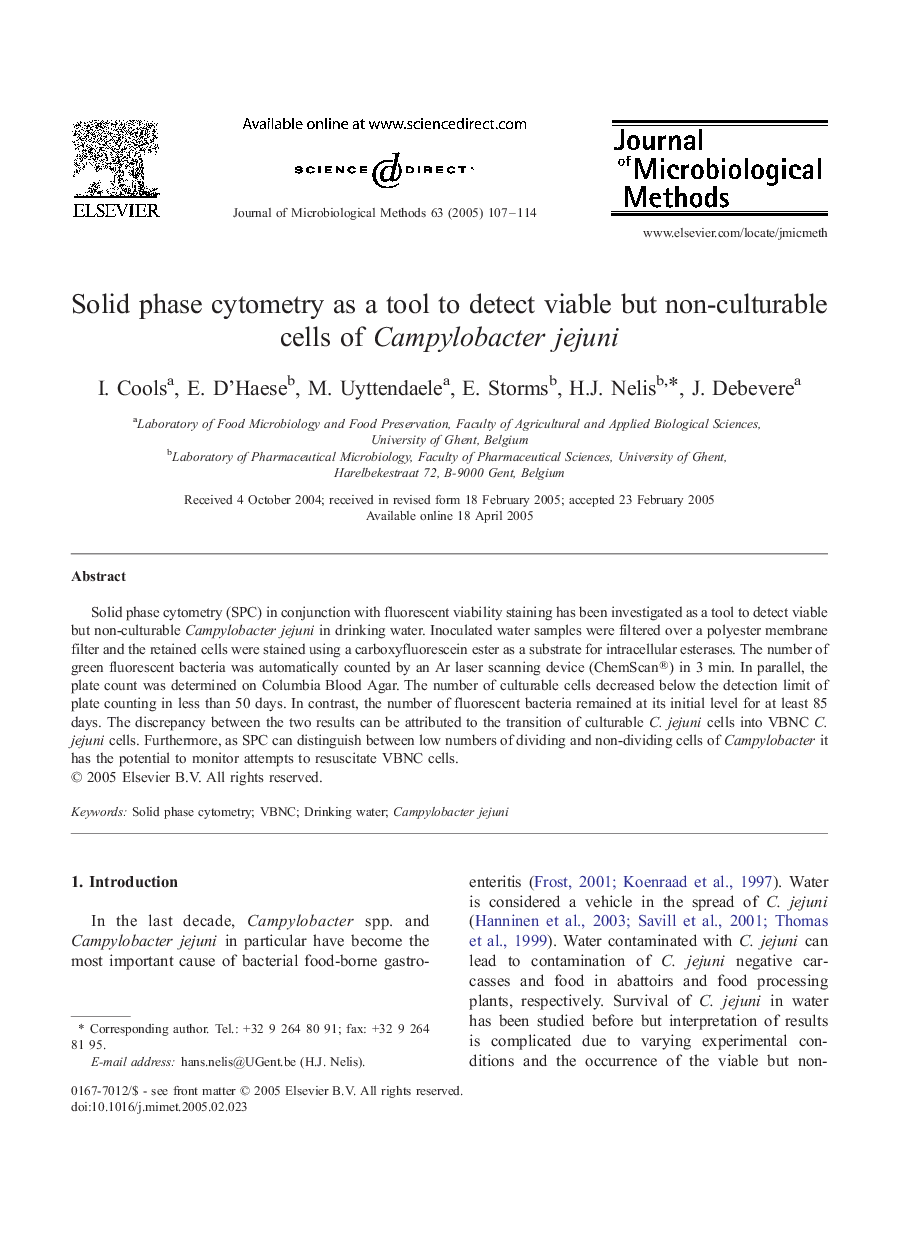| Article ID | Journal | Published Year | Pages | File Type |
|---|---|---|---|---|
| 10890707 | Journal of Microbiological Methods | 2005 | 8 Pages |
Abstract
Solid phase cytometry (SPC) in conjunction with fluorescent viability staining has been investigated as a tool to detect viable but non-culturable Campylobacter jejuni in drinking water. Inoculated water samples were filtered over a polyester membrane filter and the retained cells were stained using a carboxyfluorescein ester as a substrate for intracellular esterases. The number of green fluorescent bacteria was automatically counted by an Ar laser scanning device (ChemScan®) in 3 min. In parallel, the plate count was determined on Columbia Blood Agar. The number of culturable cells decreased below the detection limit of plate counting in less than 50 days. In contrast, the number of fluorescent bacteria remained at its initial level for at least 85 days. The discrepancy between the two results can be attributed to the transition of culturable C. jejuni cells into VBNC C. jejuni cells. Furthermore, as SPC can distinguish between low numbers of dividing and non-dividing cells of Campylobacter it has the potential to monitor attempts to resuscitate VBNC cells.
Related Topics
Life Sciences
Biochemistry, Genetics and Molecular Biology
Biotechnology
Authors
I. Cools, E. D'Haese, M. Uyttendaele, E. Storms, H.J. Nelis, J. Debevere,
